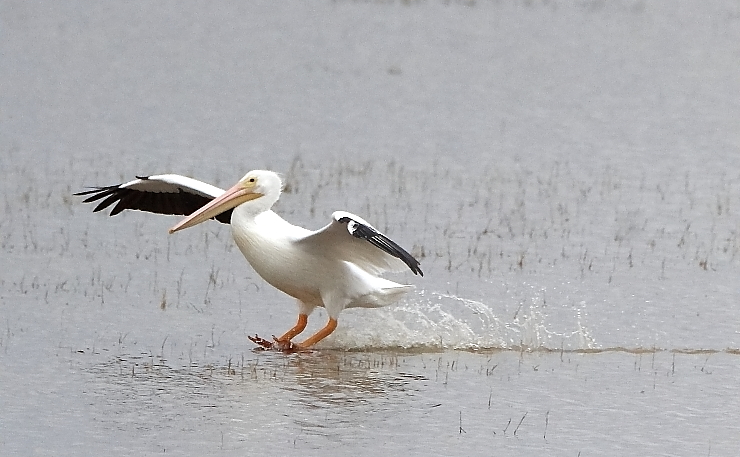
Every year, Ducks Unlimited of Mexico, A.C. (DUMAC) surveys the populations of waterfowl and shorebirds in a good number of major wetlands here in Mexico. This year, they decided to do their annual survey if Lake Cuitzeo, half an hour north of Morelia, on a Monday. Since I go birding every Monday, I decided that perhaps it was a sign, and asked if I could participate. I did not realize that I would be the single “layperson” among several dozen biologists and biology students; but for some reason, they said yes.
The various national versions of Ducks Unlimited are mostly an outgrowth of sports hunting. This is more than clear from the data they wish to collect, which emphasizes waterfowl over shorebirds, and seems to completely ignore the other birds that occur around bodies of water. (It is also clear on their website, which has a tab for “hunting”.) But, to their great credit, they clearly appreciate that North American hunters will have no waterfowl to hunt if they do not fight to preserve wetlands — not only in the U.S. and Canada, but also in Latin American wintering grounds. Frankly, if someone is interested in keeping Lake Cuitzeo (and other critical Latin American wetlands) intact, they are my friends. And as they seem to be the only organization working on this, they are my very good friends.
In 2017, I saw the results of one of DUMAC’s surveys. I don’t remember the exact numbers, but I do recall thinking they couldn’t possibly be true — they seemed far too large. My personal proof for this suspicion was that they included birds such as Dunlins and Neotropical Cormorants, which my many visits to the lake had convinced me did not occur there. Then, within a couple of months, I saw my first Cormorants at the lake. The next fall, I saw my first Dunlins there. Now, I secretly do suspect that many millions of ducks may spend the winter in my own backyard.
At any rate, on Monday the 7th of this month I ended up helping to survey eight sites on the northwest shore of Lake Cuitzeo. As it turns out, the lake on this shallower end is currently only a few inches deep. (I have the photos of a standing White-faced Ibis next to wading Northern Pintails, Northern Shovelers, and American White Pelicans, to prove this.) So we undoubtedly saw many less waterfowl on our end of the lake than did the teams surveying its deeper east end, as well as the DUMAC-rented plane flying overhead.
Even so, in seven hours (with lots of time spent driving between these eight sites), we saw over 800 ducks, more than 400 shorebirds, and 115 egrets/herons/ibis. There were also a good number of American Coots, and a few grebes.
I also learned some lessons from birding with all these biologists:
- Biologists are way better at counting large numbers of creatures than I am. I’ve never had to develop the patience required to count birds as far as the eye can see. And even when I did try, my counts came up significantly lower than the science people’s count.
- On the other hand, a college degree does not guarantee the ability to ID birds. I quickly realized I was the only person on our team who could distinguish a Lesser Yellowlegs from the Greater Yellowlegs, Least Sandpipers from Western Sandpipers, and Stilt Sandpipers from Long-billed Dowitchers.
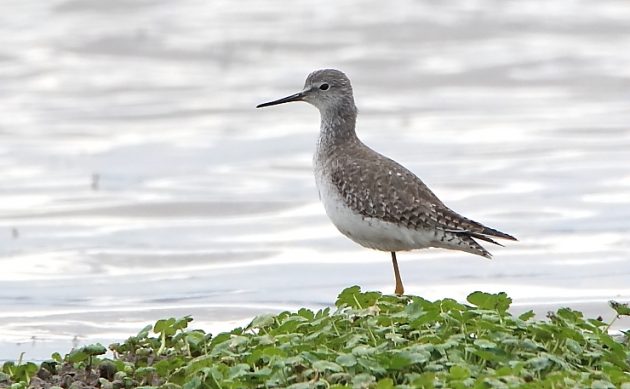
This Yellowlegs was Lesser, as shown by its relatively short, entirely gray bill.
- Hit-and-run birding is a good way to find new sites, and count lots of birds. But I’ll stick with taking my time and making sure I find every bird of interest.
- Being a scientist is wonderful, but as they sang in “The Music Man”: You’ve gotta know the territory! My new friends survey the lake once a year. I do so every 2-3 months, year after year. I still can’t explain why they didn’t have the north end of the free road causeway on their list of sites to be surveyed. But we were all glad that it ended up being our post-survey rendezvous point; when the other teams were late turning up, it became our best site of the day. (As I could have predicted.)
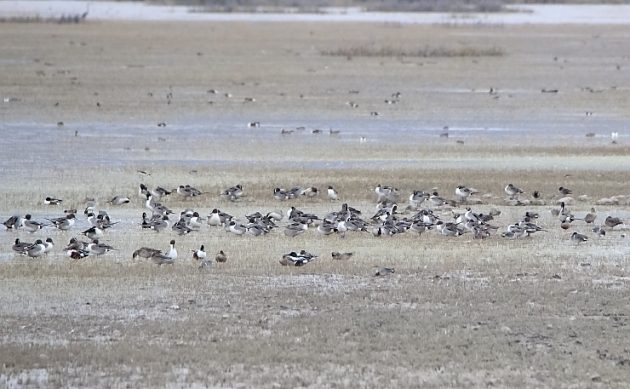
There were lots and lots of Northern Pintails at that spot.
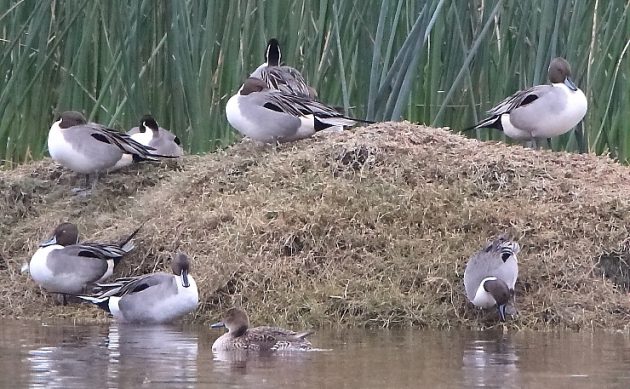
Northern Pintails enjoy trying out different positions and poses for their closeup.
- Still, biologists, and biology students, are good people! It is wonderful to spend time with people so committed to making a real difference for the environment.
This trip was not primarily about adding to my eBird reports for the year, or taking photos. But I did both. Here are a few of the other photos that worked for me:
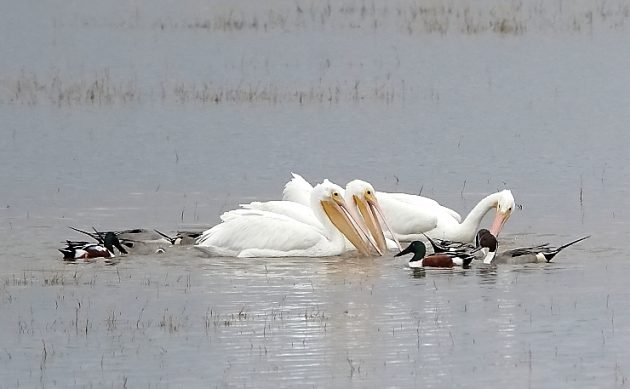
This trio of American White Pelicans had its own duck groupies. Apparently the ducks benefitted from the feeding or movement of the pelicans in some way; they stuck to the pelicans like glue.
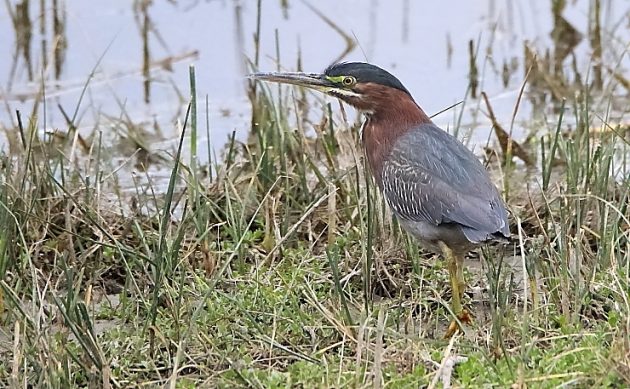
Green Herons are very photogenic birds. But they aren’t green.
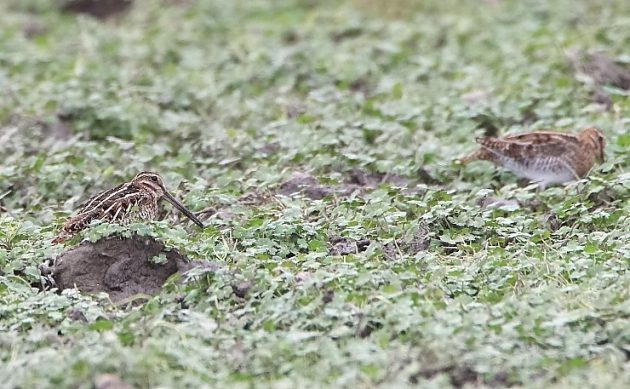
We came across a patch of weeds that was crawling with Wilson’s Snipes. I’m a big fan of Snipes.
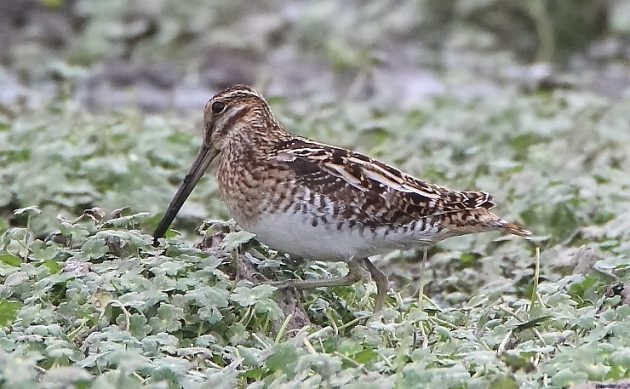
At least here, Snipes tend to hid out in brush about their height, and are very hard to see. But these Snipes were very bold. I’m hoping it may become a trend.
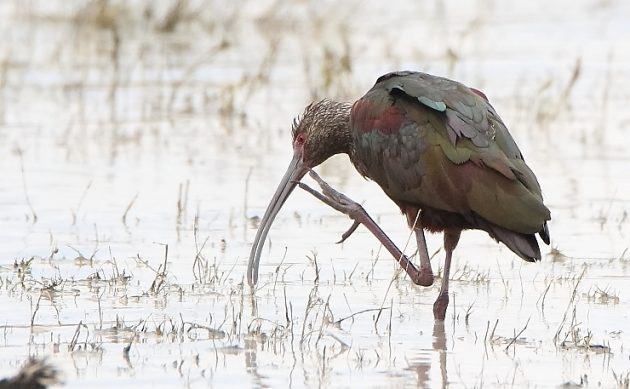
Sometimes, a White-faced Ibis just has to scratch.

I was very pleased to see several Brewer’s Blackbirds mixed in with a large group of Brown-headed Cowbirds and Yellow-headed Blackbirds. This is only my second sighting of the species on Lake Cuitzeo. (Although I would have been even happier to be in the group that sighted a Wood Stork on the lake’s eastern shore.)
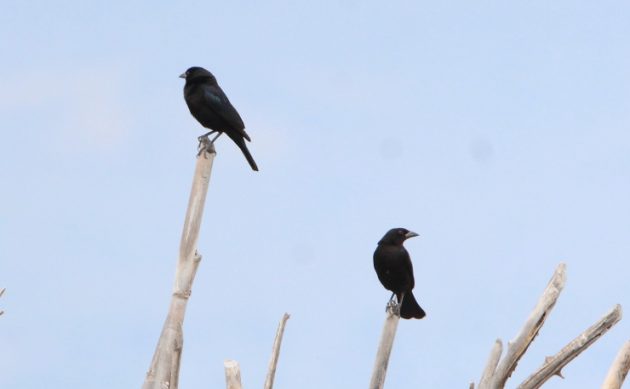
Bronzed Cowbirds may look like those Brewer’s Blackbirds. But their eyes are red, not white.
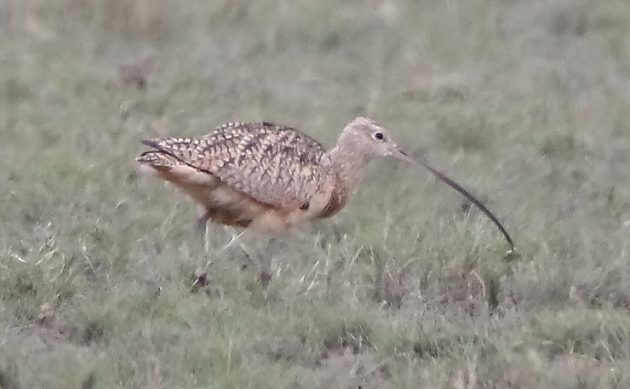
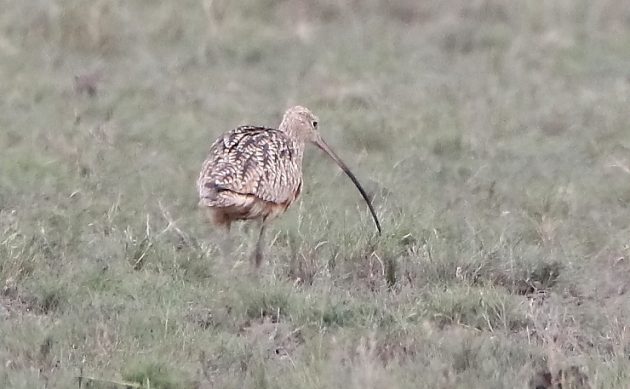
This Long-billed Curlew was too far off for good photos. But that amazing bill was made for showing off. So I will.











Leave a Comment